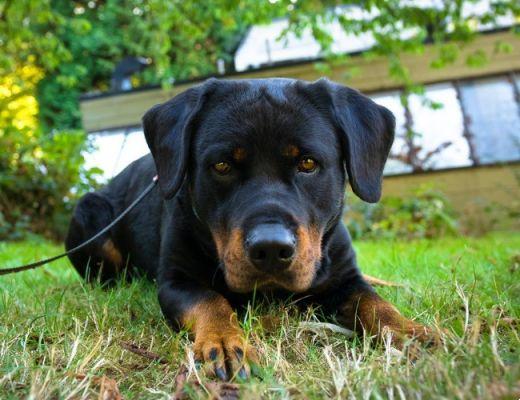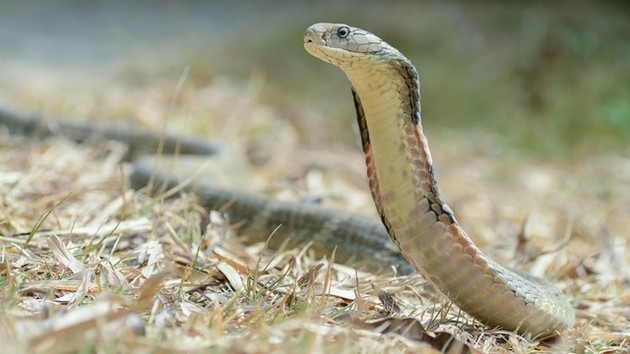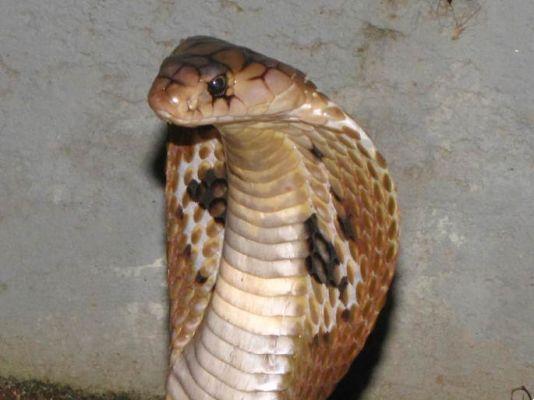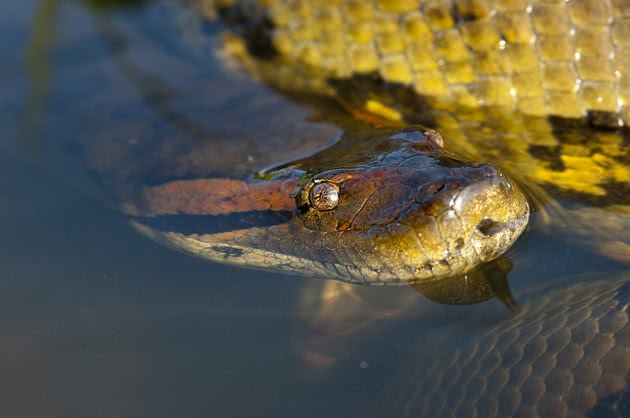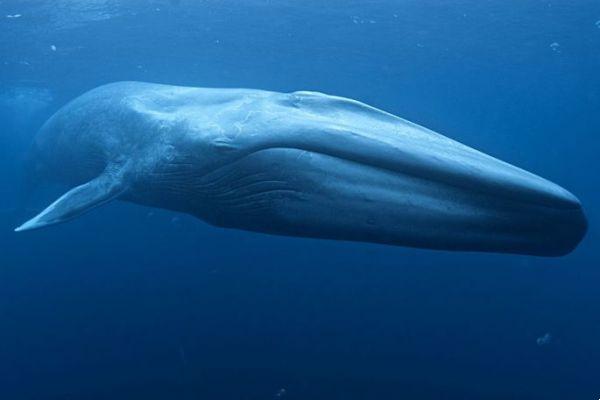There are about 400 species of snakes in Brazil, 63 of which are considered venomous, that is, they produce a toxic substance used for hunting or defense. This does not mean that the most venomous Brazilian snakes are the most dangerous, as they are not always responsible for the highest number of accidents per year.
A Coral-true is the most venomous snake in Brazil. However, its calm behavior and vibrant colors make accidents caused by it very low, representing only 0,1% of cases in the country. Check now which are some of the most venomous snakes in Brazil, where they can be found and their greatest curiosities.
True Coral

Scientific name: Micrurus lemniscatus
Occurrence: Amapá, Pará, Amazonas, Roraima, Acre, Maranhão, Tocantins, Rondônia, Goiás, São Paulo, Mato Grosso do Sul, Paraná, Rio Grande do Sul, Minas Gerais, Mato Grosso.
The Micrurus lemniscatus is a species of coral snake well known for its coloration. It has the highest toxicity among snake species in Brazil, at 0,69 mg/kg. Males can measure 1,3 meters in length and females 1,1 meters. The body of these snakes have black, white and red rings. The head is rounded and has a black ring on the muzzle. When threatened, they tend to curl up and raise their tail.
The venom of this snake has neurotoxic activity, which can cause double vision, dizziness, muscle pain and respiratory failure.
Surucucu pico de jackfruit

Scientific name: Lachesis mutates
Occurrence: Amazon and Atlantic Forest (Paraíba to Rio de Janeiro)
Popularly known as Surucucu pico-de-jaca, the species Lachesis muta is the largest venomous snake found in America. It can measure up to 3 meters in length and its coloration is composed of black spots in the shape of diamonds. In adult species, the dorsal scales are pointed. The tip of the cause has raised scales and a scale curled at the end that resembles a thorn.
The venom of this species can cause major bleeding in the victim and also have a neurotoxic action on the system.
Cascavel

Scientific name: Crotalus durissus
Occurrence: all of Brazil with the exception of Acre
Crotalus durissus is one of the most dangerous rattlesnake species that can be found throughout most of Brazil. The venom of this species can directly or indirectly affect the circulatory system of the stung victim. Studies carried out in large mammals have proven the severity of this snake's venom, which can be extremely lethal in humans.
Alcatrazes Jararaca

Scientific name: Bothrops alcatraz
Occurrence: São Paulo
This species of Brazilian snake is found exclusively on the island of Alcatrazes, located on the north coast of São Paulo. Measuring just 50 centimeters in length, this snake has a potent, highly coagulating venom. The venom of the Jararaca-de-Alcatrazes is considered 10 times stronger compared to other species of jararacas found on the Brazilian continent, and can even cause nervous paralysis in the bitten victim.
Jararaca-Ilhoa

Scientific name: Bothrops insularis
Occurrence: São Paulo
Bothrops insularis, better known as Jararaca-Ilhoa, is a species that can be found exclusively on Ilha da Queimada Grande, off the coast of São Paulo. The species is endangered and scientists estimate that there are only 2000 snakes of this species in the world. This snake's venom is extremely toxic, but it is proven to be more potent in birds compared to mammals.
Jararaca-Cruzeira

Scientific name: Bothropoides neuwiedi
Occurrence: Bahia, Goiás, Minas Gerais, Rio de Janeiro, São Paulo, Paraná, Santa Catarina and Rio Grande do Sul
The Jararaca-Cruzeira is a venomous snake that can measure up to 1,15 meters in length. It can be found in shades of gray and brown and has characteristic triangular spots along its body. The venom of this snake can cause acute pain and in more serious cases, vomiting and fainting.
jararacuçu

Scientific name: Bothrops jararacussu
Occurrence: Minas Gerais, Espírito Santo, Rio de Janeiro, Sao Paulo, Mato Grosso do Sul, Paraná, Santa Catarina, Rio Grande do Sul
The Jararacuçu is the second largest species of venomous snake found in Brazil, second only to the Surucucu pico de jackfruit. It can measure up to 2,2 meters in length and its name in the Tupi language means "big poisonous serpent". Records of people bitten by this serpent reveal the lethal power of its venom. Cases of circulatory and respiratory failure, intracerebral hemorrhage and even renal failure have been reported.
caiçara

Scientific name: Bothrops moojeni
Occurrence: Brazilian southwest
Caiçara snake venom is capable of destroying muscle fibers and tissues of the attacked victim. However, it is not just the potent venom of this snake that is frightening. It is considered one of the most aggressive snakes found in Brazil and its attack, in addition to being fast, is also capable of reaching the upper parts of the victim's body.
Cobra Cotiara

Scientific name: Bothrops cotiara
Occurrence: Sao Paulo, Paraná, Santa Catarina, Rio Grande do Sul
Being able to measure up to 1 meter in length, the Cotiara is found especially in Argentina and in the Brazilian araucaria forests. Its venom is quite lethal to mammals and is presumed to be very dangerous to humans as well. Due to the lack of records of attacks, it is not possible to conclude the real lethality of the Cotiara venom.
Urutu Cruise

Scientific name: Bothrops alternatus
Occurrence: Goiás, Mato Grosso do Sul, Minas Gerais, Paraná, Santa Catarina, Rio Grande do Sul, Sao Paulo
Popularly known as Urutu, Bothrops alternatus is a dangerous snake that can be found in Brazil. Not only do they have a venom that is very dangerous for humans, but they are also extremely fast and aggressive in their boats. Another characteristic that distinguishes them are the spots along the body in the shape of horseshoes.
Jararaca Verde

Scientific name: Bothrops bilineata
Occurrence: Acre, Amapá, Amazonas, Bahia, Mato Grosso, Espírito Santo, Rondônia, Roraima
This venomous snake can be found especially in the equatorial region of Brazil and stands out for its vibrant greenish color. One characteristic that distinguishes them from other species is the fact that they spend most of their lives in trees. They feed especially on birds and mammals and usually measure up to 1 meter in length.
pit viper

Scientific name: Bothrops atrox
Occurrence: Acre, Amapá, Amazonas, Maranhão, Mato Grosso, Pará, Roraima, Tocantins
One of the species of snakes that most cause accidents in the Amazon region, the Northern Jararaca can be found especially in forests and flooded places. In addition to the poison, another issue that scares is its size, it can measure up to 1,72 meters in length.
Sources:
Guide to snakes in the region of Manaus - Central Amazon = Guide to the snakes
of the Manaus region - Central Amazonia / Rafael de Fraga... [et. to the.]. — Manaus: Publisher Inpa, 2013.
Venomous and Poisonous Animals. SINITOX/CICT/FIOCRUZ. Preventing Poisoning Series.




